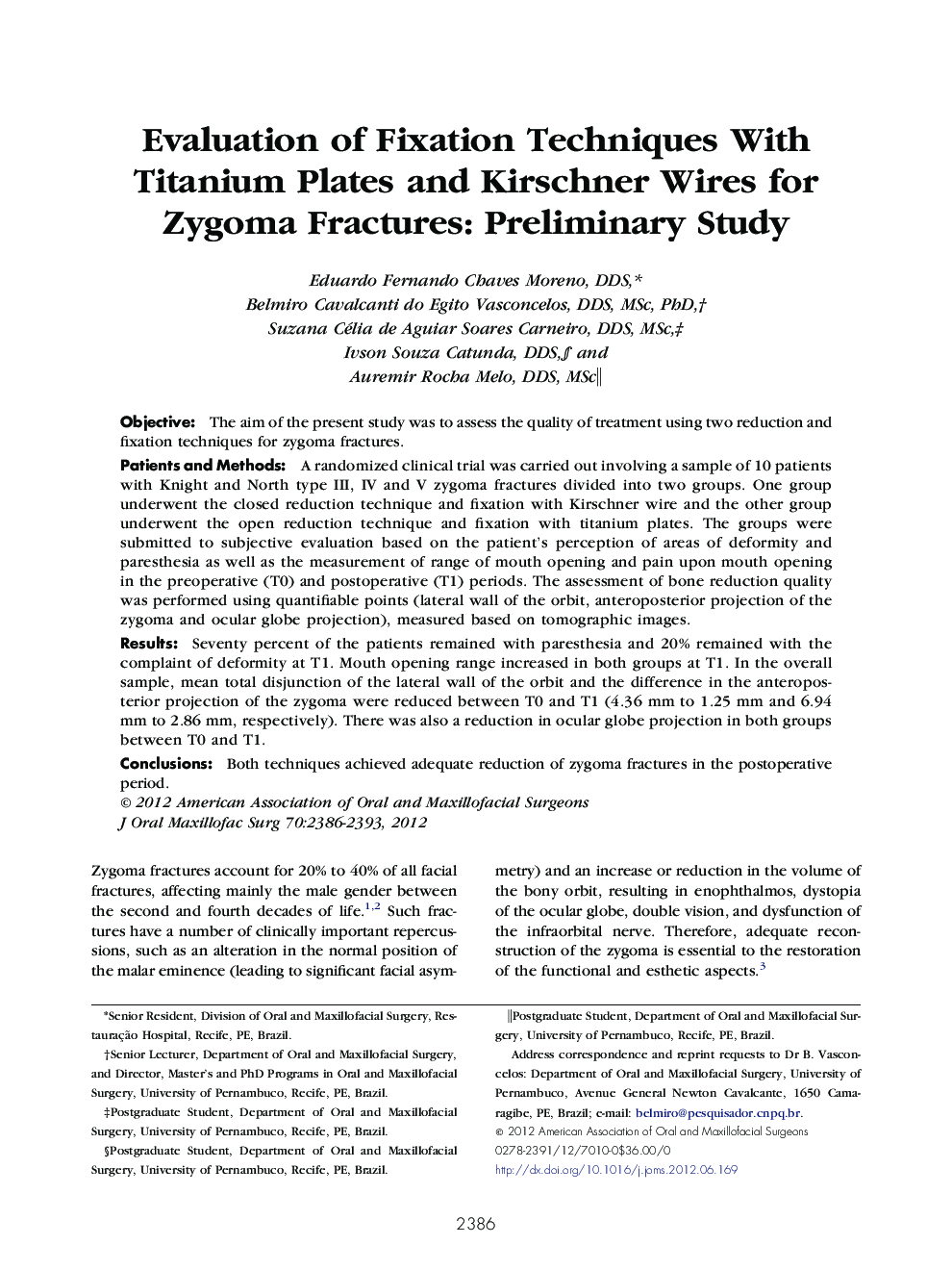| Article ID | Journal | Published Year | Pages | File Type |
|---|---|---|---|---|
| 3156651 | Journal of Oral and Maxillofacial Surgery | 2012 | 8 Pages |
ObjectiveThe aim of the present study was to assess the quality of treatment using two reduction and fixation techniques for zygoma fractures.Patients and MethodsA randomized clinical trial was carried out involving a sample of 10 patients with Knight and North type III, IV and V zygoma fractures divided into two groups. One group underwent the closed reduction technique and fixation with Kirschner wire and the other group underwent the open reduction technique and fixation with titanium plates. The groups were submitted to subjective evaluation based on the patient's perception of areas of deformity and paresthesia as well as the measurement of range of mouth opening and pain upon mouth opening in the preoperative (T0) and postoperative (T1) periods. The assessment of bone reduction quality was performed using quantifiable points (lateral wall of the orbit, anteroposterior projection of the zygoma and ocular globe projection), measured based on tomographic images.ResultsSeventy percent of the patients remained with paresthesia and 20% remained with the complaint of deformity at T1. Mouth opening range increased in both groups at T1. In the overall sample, mean total disjunction of the lateral wall of the orbit and the difference in the anteroposterior projection of the zygoma were reduced between T0 and T1 (4.36 mm to 1.25 mm and 6.94 mm to 2.86 mm, respectively). There was also a reduction in ocular globe projection in both groups between T0 and T1.ConclusionsBoth techniques achieved adequate reduction of zygoma fractures in the postoperative period.
